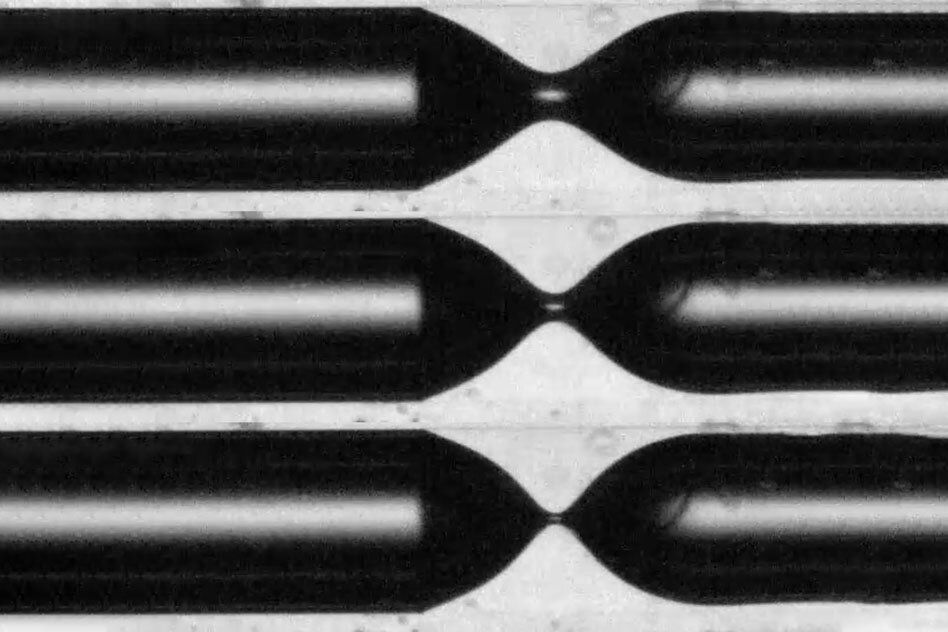The formation of air bubbles in a liquid appears very similar to its inverse process, the formation of liquid droplets from, say, a dripping water faucet. But the physics involved is actually quite different, and while those water droplets are uniform in their size and spacing, bubble formation is typically a much more random process.
Now, a study by researchers at MIT and Princeton University shows that under certain conditions, bubbles can also be coaxed to form spheres as perfectly matched as droplets.
The new findings could have implications for the development of microfluidic devices for biomedical research and for understanding the way natural gas interacts with petroleum in the tiny pore spaces of underground rock formations, the researchers say. The findings are published today in the journal PNAS, in a paper by MIT graduate Amir Pahlavan Ph.D. ‘18, Professor Howard Stone of Princeton, MIT School of Engineering Professor of Teaching Innovation Gareth McKinley, and MIT Professor Ruben Juanes.









Comments are closed.